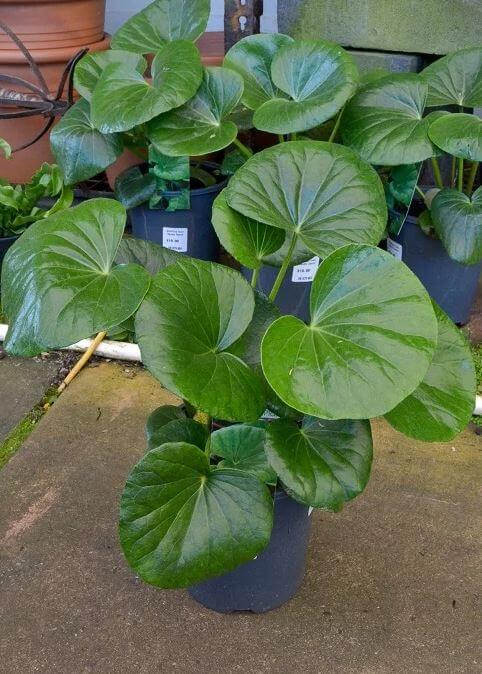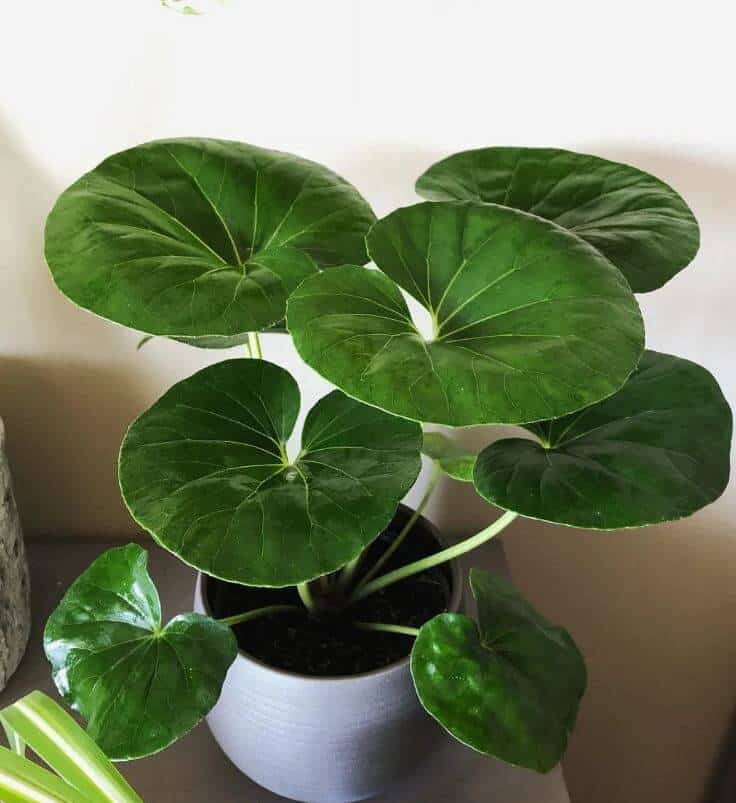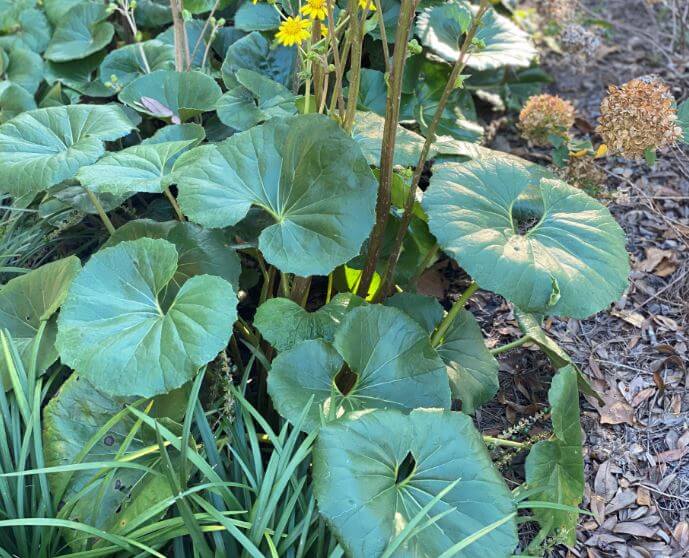Last Updated on March 1, 2023 by a Friendly Gardener
If you’d like large, deep green, glossy leaves in your garden, consider the Tractor Seat plant. Botanically named the Ligularia dentata reniformis, the Tractor Seat plant is a truly unique and lovely plant to add to your garden. Lush foliage is a dark green hue that can be planted both indoors and outside to add beauty to any spot. The foliage resembles the shape of a tractor seat, hence its popular name.
Native to Japan, this perennial has recently been given a new classification as the Farfugium Japonicum. You may also find it referred to as the Leopard plant due to a variegated Tractor Seat plant having yellow dots on its leaves.
Tractor Seat varieties have individual leaf shapes, flowers, and growth habits. Appreciated for its foliage, it also is prized for its yellow blossoms that grow in clusters resembling daisies on long stalks and are perfect as cut flowers.
Tractor Seat Plant Care

The Tractor Seat plant boasts large attractive leaves that look wonderful when planted around wood decks and along drives and pathways. A solid backdrop works well as a frame for their characteristic foliage. A mid-sized exemplar can grow to approximately 2 to 3 feet and make wonderful additions to outdoor gardens arranged between taller plants and ground cover selections. It can be cultivated in USDA hardiness zones 7 through 9 and enjoys great success in Louisiana.
Soil
Your Tractor Seat plant does best in a soil bed that is rich in humus and kept evenly moist. Select a loamy or sandy soil that ensures excellent drainage. Amend your soil blend with organic compost to increase water retention capabilities. Soil pH should be neutral.
When cultivating outdoors, mulch your Tractor Seat plants to maintain moisture during dry weather. Aged manure or leaf mold is ideal for mulching.
Light

The Tractor Seat plant loves light and will thrive in bright light as long as it is not direct. This plant should not be positioned in direct sunlight or foliage will wilt and your plant will suffer. It should never be exposed to harsh sunlight at midday or in the afternoons. This plant will thrive when afforded dappled light or when exposed to the morning sun and when protected from winds. Partial shade is also not advised as smaller leaves will develop and growth will be slower. This is one of the challenges of growing this plant indoors.
Water
A coastal native, the Tractor Seat plant is relatively thirsty as plants go. The soil must be kept moist at all times for the plant to survive. They should be given a deep soaking watering at least once weekly. The soil bed should never be allowed to dry out as this will harm the leaves and cause wilting. Ideally, water should be collected from rainwater or filtered city tap water.
Humidity
For your plant to thrive, treat it as a tropical. This means that it should enjoy moderate to higher humidity levels in the 50% to 60% range. When cultivated outdoors, make sure it is in a protected location. If you are cultivating it indoors and the air tends to be dry, use a space humidifier or pebble tray to improve humidity levels.
Temperature

As a coastal plant, it should be protected from fluctuations in environmental temperatures. While it can support cooler temps although nothing lower than 10°F., it needs to be protected from frost. The Tractor Seat plant may freeze during winter weather but will regenerate in spring. Remove any damaged foliage.
Feeding
If the soil bed is very fertile and rich in humus or organic compost, your plant will not require additional fertilization. But should you want to boost its growth habit, use a quality liquid fertilizer once every 5 to 6 weeks during the growing season. Avoid fertilizing during winter dormancy.
Pruning
The Tractor Seat plant does not require pruning but damaged or diseased leaves should be removed. You can trim tips in early spring to encourage growth.
Repotting a Tractor Seat Plant

While ideal for outdoor gardens, the Tractor Seat plant can be cultivated successfully in pots and containers as long as they have a sufficient number of drainage holes and the proper kind of soil. Clay or terracotta pots are optimal because they aid in wicking away excess moisture and maintain the soil temperature cooler than plastic will do. When roots peek from drainage holes or the soil surface, they have outgrown their container and it’s time to repot in a new pot one to two sizes larger.
Propagating Tractor Seat Plants

Tractor Seat plants can be propagated through root division or from seeds. These plants have a clumping habit, so when repotting divide the root ball. Each section should have both roots and foliage. Divisions should possess 2 or 3 buds or eyes on roots as new plants will develop from these buds. You can also divide any offsets from the parent plant and transplant them. Ideally, mature plants should be divided in the spring while still dormant every 3 or 4 years. Divisions should be deeply watered.
To propagate using seeds, sow them in organically rich, well-draining soil. Place the container in a location that is dry and cool. Mist your seeds daily to maintain the soil bed moist. When seedlings reach 5 to 10 inches they can be repotted or transplanted.
Tractor Seat Plant Toxicity
Your Tractor Seat plant is toxic to humans and pets. Keep it out of the reach of both children and fur babies.
Tractor Seat Pests and Problems
While not particularly at risk for serious pest infestations, your Tractor plant’s leaves will attract garden snails and slugs. For slug problems treat your garden bed with diatomaceous earth powder or use crushed eggshells.
Sunburn is another problem. An hour or two of direct sunlight can burn your plants. If leaves appear papery or brown, move your plant to a spot with more shade. Remove damaged leaves.
Avoid washing or watering your plant from above. Powdery mildew can affect this plant. While this fungal disease is not fatal, it will obstruct photosynthesis, weakening the plant. If you spot white spots that appear like a powder on foliage, treat your plant with a Neem oil spray.


